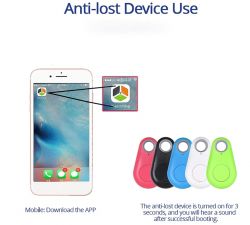Hi,
I need to install a device used in hotels, switching off certain circuits when the user leaves the house. Hotels use hotel switches in the form of cards, RFID cards, magnetic cards. The user has them clipped in together with the room keys. Upon entering the room, he inserts the card into the slot. Circuits (AC, TV etc.) are switched on. When leaving to lock the room, the user removes the card from the slot, disconnecting the circuits.
As I have Zigbee, it would be more convenient to use a key fob that would be polled periodically by the network . Advantages , small size (with keys) and no need to place in the slot. WiFi solutions are power hungry. BLE would be ok but I have no way to integrate .
Maybe a colleague has an idea or has linked some inexpensive solution.
The idea is to cut the circuit when the user leaves the room. I know I could do detection using a door sensor + PIR, but maybe there are some low energy key fobs that would take care of the issue. In the 21st century, I don't want to put a large card under the keys. Especially as there is zigbee 3.0 (tuya) at home. The advantage of a physical rally is the reliability and wired connection. There are UHF RFID solutions. The usb programmer I have, but the readers are expensive. RFID on the lower bands require proximity, and I would like to eliminate this (it appears in the room brelko, the sytem detects it by itself, without user action)
I would be grateful for suggestions of sensible, viable solutions / products.
Regards .
.
I need to install a device used in hotels, switching off certain circuits when the user leaves the house. Hotels use hotel switches in the form of cards, RFID cards, magnetic cards. The user has them clipped in together with the room keys. Upon entering the room, he inserts the card into the slot. Circuits (AC, TV etc.) are switched on. When leaving to lock the room, the user removes the card from the slot, disconnecting the circuits.
As I have Zigbee, it would be more convenient to use a key fob that would be polled periodically by the network . Advantages , small size (with keys) and no need to place in the slot. WiFi solutions are power hungry. BLE would be ok but I have no way to integrate .
Maybe a colleague has an idea or has linked some inexpensive solution.
The idea is to cut the circuit when the user leaves the room. I know I could do detection using a door sensor + PIR, but maybe there are some low energy key fobs that would take care of the issue. In the 21st century, I don't want to put a large card under the keys. Especially as there is zigbee 3.0 (tuya) at home. The advantage of a physical rally is the reliability and wired connection. There are UHF RFID solutions. The usb programmer I have, but the readers are expensive. RFID on the lower bands require proximity, and I would like to eliminate this (it appears in the room brelko, the sytem detects it by itself, without user action)
I would be grateful for suggestions of sensible, viable solutions / products.
Regards







